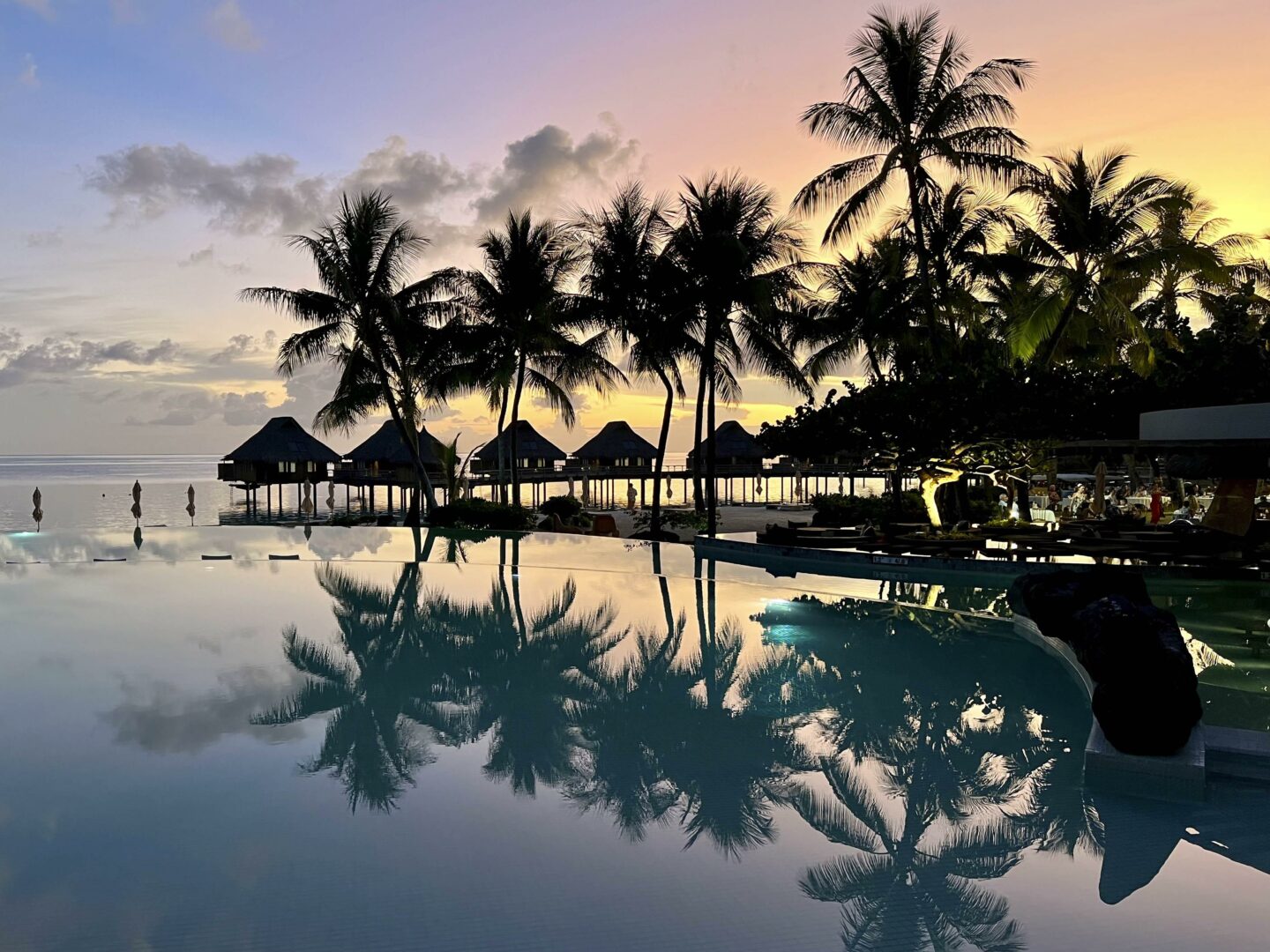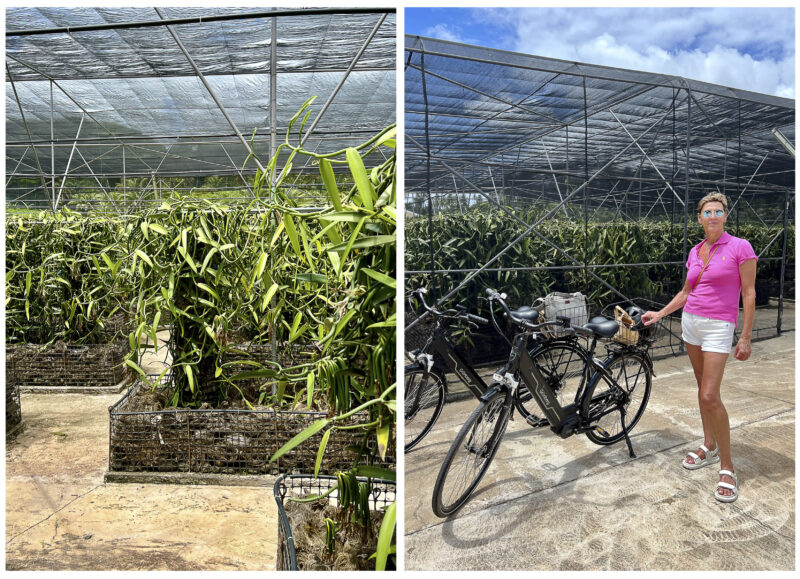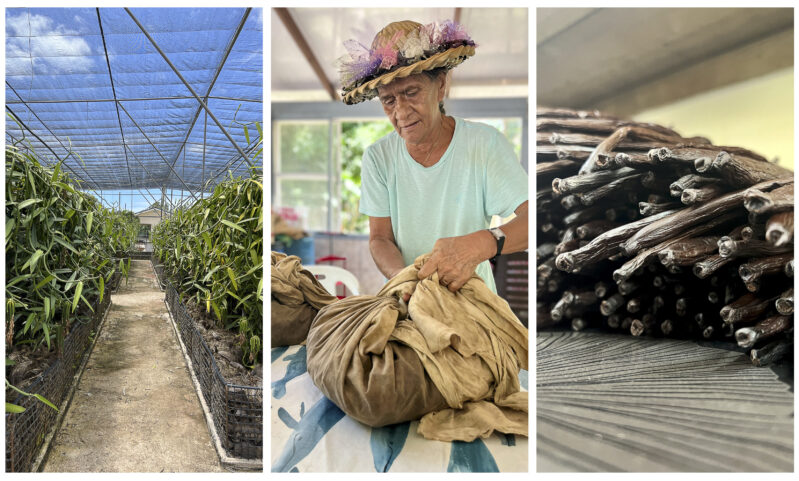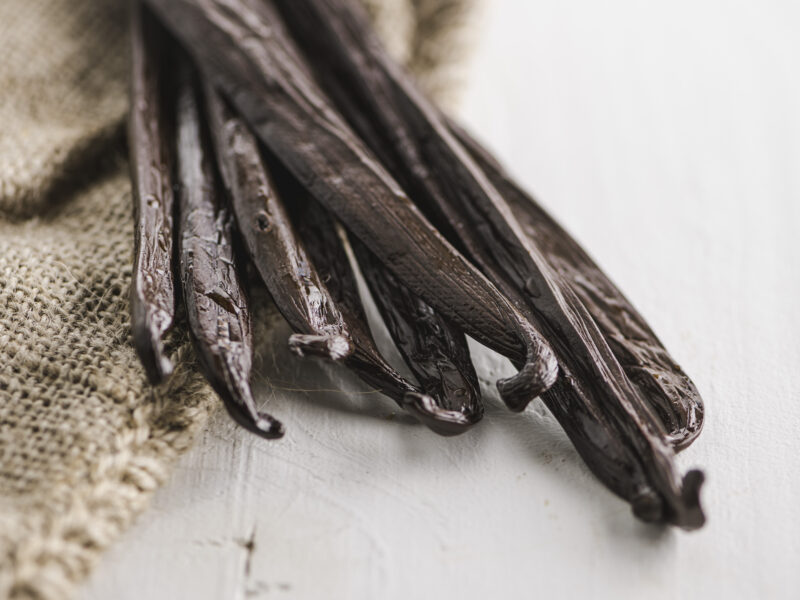All about vanilla, Tahiti’s black gold
A highlight of my dream trip to French Polynesia? Our visit to the Vallée de la Vanille, the only traditional vanilla plantation on the island. There we were introduced to the world of vanilla, Tahiti's black gold. I'm eager to tell you all about it!

Where does vanilla come from?
Legend says that none other than Hernando Cortez allegedly drank a chocolate drink with vanilla in 16e century Mexico. He was so fascinated with the taste that he decided to bring the plant with him to Europe. The vanilla plant, originally from Mexico, was spread from there throughout the world by the Spanish conquistadores.
But that's where problems started. Vanilla belongs to the orchid family and grows in a tropical, warm and humid climate. Easy to cultivate outside of Mexico, you might think, but that’s not the issue...
We owe the fruit of the vanilla plant to the process of natural pollination. And for this we rely on the melipona bee, which is found only in South America . No pollination, no fruit! All attempts to cultivate the vanilla plant in other areas were therefore unsuccessful.
Until 1841. On the island of La Réunion, a 12-year-old boy born into slavery came up with the idea to help the plant a little. To him we owe the process of artificial pollination, performed by man. Thanks to this insight, vanilla production exploded worldwide and now we can all enjoy this black gold.
Patience is key with vanilla
It takes about four years from the time a graft is planted on the stake to the final vanilla pod, ready for sale. The plant takes two years to produce its first flowers. These open only once in their lifetime, between 4 a.m. and 1 p.m. So the timing of manual pollination is critical. Nine months after pollination, the flowers fall off and we have a fruit.
But the process does not stop there. Several more time-consuming months follow during which the fruit ripens, dries and is massaged. Only then is the vanilla pod ready for use in our kitchens.

Vanilla tahitensis
The Tahitian vanilla variety, vanilla tahitensis, has a uniquely refined and complex aroma. Vanilla tahitensis owes that aroma to the crossing between several varieties. The University of Tahiti studied the plant and was able to identify more than 200 different components in its aroma. Vanilla tahitensis contains more notes of caramel and anise, while bourbon vanilla has a fruitier aroma with hints of wood. It truly is an extraordinary product.
How is vanilla tahitensis produced?
With Tahitian vanilla, only the ripe vanilla fruits may be harvested. Sometimes the fruit is harvested while still green so that birds and insects do not prey on them. The fruits are first separated from the cluster. Then they are rinsed and packed in cotton bags to ripen. The pods are heated in the bags and start to sweat. They are alternately exposed to the sun and put in the shade. This process can take up to 6 months.
This direct method is unique but very time-consuming. Other varieties of vanilla are first dipped in hot water before the ripening process . Unfortunately, that indirect technique removes the aroma on the outer skin of the vanilla pod.
During the ripening process, the pods lose some of their moisture and gradually develop their aroma. A layer of oil also forms on the surface of the pod. This not only keeps the fruit soft and supple. The oil also allows you to use both the pod and the seeds; a characteristic unique to vanilla tahitensis.
The pods are now ready to be massaged. This handling requires quite a bit of knowledge and experience. If you do it right, it distributes the seeds evenly throughout the pod. The massage also removes any remaining moisture and straightens the pods nicely. Finally, the pods are sorted according to size and quality, and then they are ready for sale!

Vanilla is expensive
After saffron, vanilla is the most expensive spice in the world. It takes a lot of time and attention to arrive at the vanilla pod as we know and use it. You easily pay four to five times as much online or in shops abroad as in Tahiti. Although a trip there isn’t cheap either…
How can I store and use vanilla?
I received some tips for preserving and using vanilla from Moeata, the owner of Vallée de la Vanille.
- Once out of the vacuum packaging, keep the vanilla pods in a sealed jar with 3 cm of alcohol. You can certainly use rum for this purpose. Keep the jar in a dark place at room temperature. Never put vanilla pods in the refrigerator. Moeata showed us jars with 20-year-old vanilla pods!
- Are you using Tahitian vanilla and the recipe says "infuse the liquid with the vanilla pod, cut it in half lengthwise and remove the seeds"? Direct treatment allows the pod to retain its aroma on the outside, allowing you to use it without opening it. That means you can use the same vanilla pod more than once. You don't always need a full vanilla pod, either.
- Want to flavor milk or yogurt? Then use the entire vanilla pod, but again, don't open it. Put the vanilla into the liquid, let it infuse for a while, then take it out. Then simply rinse the pod with water and let it dry. Put it back into the jar of alcohol. This way you can use the vanilla multiple times!
- If you need vanilla seeds for a sauce, cut a few inches piece from the vanilla pod. Let the piece infuse the sauce, cut it open and remove the seeds. Add the seeds to the sauce, but don't discard the peel. Rinse, let dry and then put it in a jar of sugar, for example. After a week you will have vanilla sugar. You can do the same with salt, coffee, honey, cocoa ...
- Use your piece of dried vanilla pod to perfume a linen closet. Caution: put the vanilla in a cloth sachet to avoid stains.
- The rule of thumb: you can make at least two infusions with each piece of vanilla without using the seeds. If you do use the seeds, first dry and then grind the stick into powder. Use that powder, in turn, in your dishes.

Cuisiner avec de la vanille
La vanille peut être utilisée de multiples façons ! C'est l'ingrédient préféré pour les crèmes glacées, les biscuits, les gâteaux et les confitures. Mais saviez-vous qu'elle est également délicieuse dans les plats salés ? Associée au poisson et aux fruits de mer, elle fait battre mon cœur.